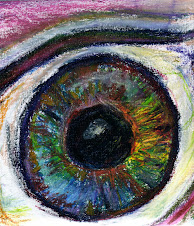- Visual spatial relations is the ability to recognize patterns between the puzzle pieces. In a jigsaw puzzle you must recognize that some pieces have a straight edge, for example. Thus, they produce the outer frame of the puzzle.
- Visual closure is the ability to predict what an image will look like when you only see a portion of it. To solve a jigsaw puzzle you have to be able to visualize which pieces fit into openings made by the other pieces.
- Scanning the array of unused pieces is an eye movement skill. People with saccadic deficits will have difficulty finding the right jigsaw piece.
- Visual memory is the skill that allows a person to create a mental image and then refer to it. This skill must be in place when searching for pieces and when returning to the incomplete puzzle to place the selected piece.
- Visual attention is a basic skill that must be in place before the simplest puzzle can be completed. People who do not value the information received by their eyes will not do well at jigsaw puzzles. They tend to try to locate things by touch instead of by sight.
- The ability to transition between a central fixation with peripheral vision is necessary to complete any jigsaw puzzle. This skill is often very under-developed in individuals on the Autism Spectrum
Remember to schedule an annual eye exam with an eye doctor who incorporates vision therapy into their practice. These developmental optometrists routinely examine children's visual perceptual development and can prescribe in-office vision therapy activities to help.
In addition, the Eye Can Too! Read series of e-books contains helpful home-based activities and resources that you can easily adapt for any individual child or classroom.





1 comment:
I think it is important for children's visual development.
Post a Comment